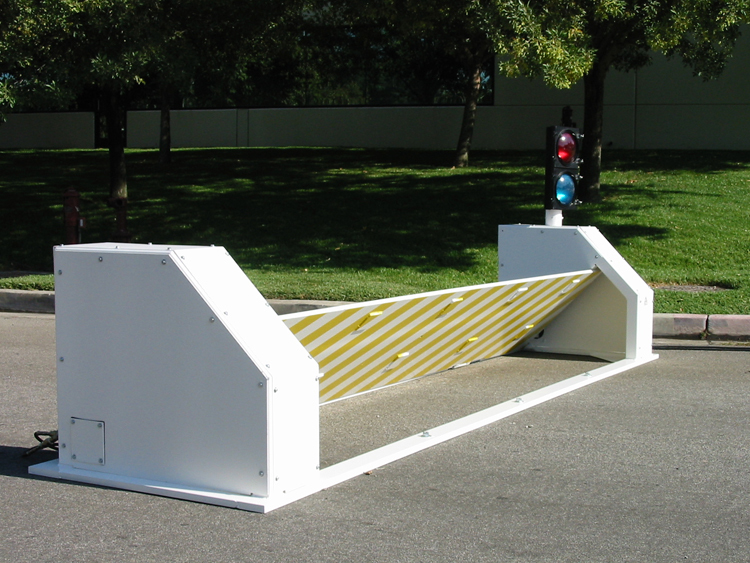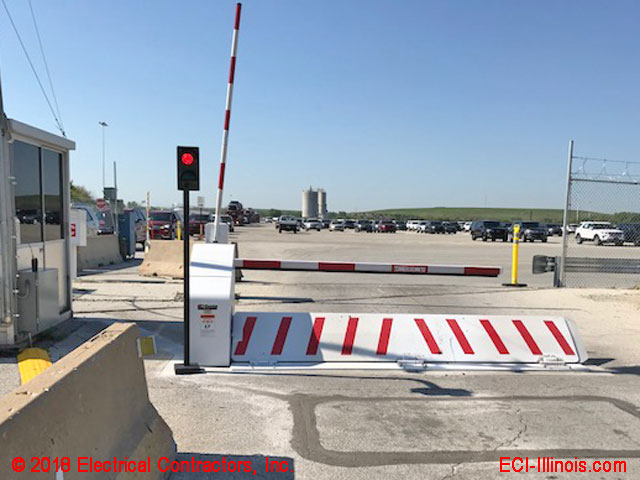Wedge Barriers for Dummies


18 may be done more rapidly, conveniently, and cost efficiently. FIG. In particular embodiments, the support 30 may be a steel framework consisting of plates, light beams(e. g., I-beams ), and/or other frameworks that are safeguarded within the structure 14, which may be concrete. At the surface area 12, a top side 28 of the anchor 30 may be at least partly revealed
, therefore enabling the accessory of the obstacle 10 to the support 30. g., threaded openings)in several light beams or plates of the support 30 might be subjected to the surface 12. In this way, screws 32 or other mechanical fasteners might be used to safeguard the obstacle 10 to the support 30. As the barrier 10 is placed to the surface area 12 of the foundation 14, collection of particles and various other material below the obstacle might be lowered, and elements of the bather 10 might not be revealed to below grade atmospheres. As suggested by recommendation character 52, the lifting system 50 consists of elements disposed below the wedge plate 16. The parts 52 below the wedge plate 16 might consist of an electromechanical actuator, a webcam, one or even more cam surface areas, and so forth. Furthermore, the training mechanism 50 consists of a springtime setting up 54
The springtime pole 58 is paired to a webcam(e. g., cam 80 displayed in FIG. 4) of the lifting system 50. The springtimes 60 disposed about the springtime rod 58 are held in compression by spring supports 62, consisting of a fixed spring assistance 64. That is, the fixed springtime assistance 64 is taken care of loved one to the structure 14 et cetera of the bather 10.
Wedge Barriers Fundamentals Explained
g., spring support 65 )may be fixed to completion of the springtime pole 58 to make it possible for compression of the springs 60. As the springs 60 are compressed in between the springtime sustains 62, the springtime setting up 54 produces a force reference acting upon the cam combined to the springtime rod 58 in an instructions 66. As an example, the continuing to be pressure applied to
the webcam to deploy the wedge plate 16 might be supplied by an electromechanical actuator 84 or various other actuator. The springtime setting up 54 and the actuator 84(e. g., electromechanical actuator)might operate together to translate the web cam and lift the wedge plate 16.
As mentioned above, the springtime assembly 54 applies a constant force on the camera, while the electromechanical actuator may be managed to apply a variable pressure on the web cam, therefore enabling the training and lowering( i. e., releasing and withdrawing )of the wedge plate 16. In particular embodiments, the consistent pressure applied by the springtime assembly 54 may be adjustable. g., electromechanical actuator) is handicapped. As will certainly be valued, the spring assembly 54 might be covered and protected from particles or other aspects by a cover plate(e. g., cover plate 68 received FIG. 4) that may be substantially flush with the raised surface area 38 of the structure 14. As mentioned over, in the deployed placement, the wedge plate 16 offers to obstruct accessibility or travel beyond the barrier 10. For example, the obstacle 10(e. g., the wedge plate 16 )might obstruct pedestrians or vehicles from accessing a property or path. As discussed over, the obstacle 10 is connected to the support 30 safeguarded within the foundation 14,
front braces 71. Because of this, the linkage assemblies 72 might pivot and revolve to make it possible for the collapse and expansion of the affiliation settings up 72 throughout retraction and deployment of the bather 10. The linkage settings up 72 reason movement of the wedge plate 16 to be restricted. As an example, if an automobile is traveling in the direction of the released wedge plate 16(e. For example, in one situation, the safety and security legs 86 might be extended throughoutmaintenance of the obstacle 10. When the safety legs 86 are released, the safety and security legs 86 support the weight of the wedge plate 16 versus the surface area 12. Consequently, the lifting mechanism 50 might be shut down, serviced, gotten rid of, replaced, and so forth. FIG. 5 is partial viewpoint view of an embodiment of the surface-mounted wedge-style obstacle 10, highlighting the camera 80 and the camera surfaces 82 of the training system 50. Specifically, two web cam surface areas 82, which are referred to as reduced camera surfaces 83, are placed listed below the camera 80. The reduced cam surface areas 83 may be repaired to the surface 12 (e. For instance, the lower web cam surface areas 83 and the installing plate 85 may form a solitary item that is protected to the anchor 30 by screws or other mechanical bolts. In addition, two camera surface areas 82, which are described as upper camera surface areas 87, are placed above the cam 80 and coupled to (e. In various other embodiments, stepping in layers or plates might be positioned in between the surface 12 and the reduced webcam surface areas 83 and/or the wedge plate 16 and the upper camera surface areas 87 As mentioned over, the web cam
80 equates along the camera surface areas 82 when the wedge plate 16 is raised from the retracted position to the deployed position. Furthermore, as stated above, the spring setting up 54 (see FIG. 3 )may give a pressure acting upon the camera 80 in the instructions 102 by means of springtime pole 58, which might lower the pressure the electromechanical actuator 84 is needed to put on the web cam 80 in order to activate and lift the wedge plate 16. 1 )to the released placement(see FIG. 4). As revealed, the camera image source 80 includes track wheels 104(e. g., rollers), which call and equate along the webcam surface areas 82 during procedure.